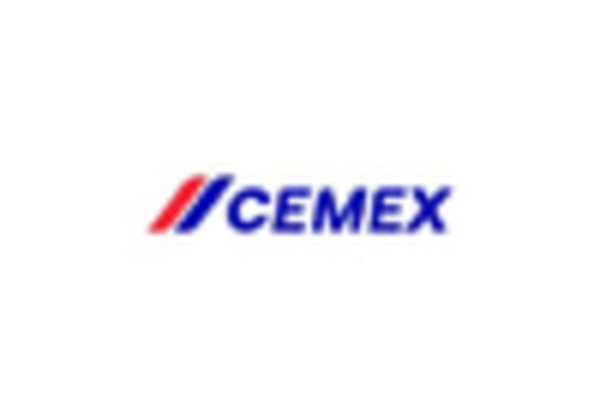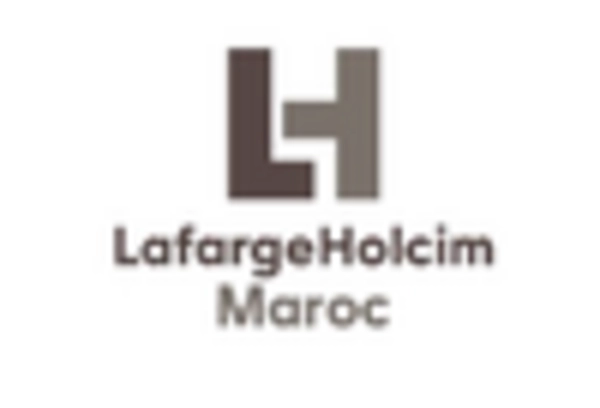Rising Demand for Affordable Housing
In China, the precast concrete market is significantly influenced by the increasing demand for affordable housing. With urbanization rates soaring, the government has prioritized housing projects to accommodate the growing population. The use of precast concrete in residential construction offers solutions that reduce labor costs and construction time. Reports suggest that the market for precast concrete in residential applications could grow by approximately 15% annually as developers seek efficient building methods. This trend aligns with the government's goal to provide affordable housing options, thereby driving the precast concrete market forward. The ability of precast concrete to meet stringent building codes while maintaining affordability makes it an attractive choice for developers.
Government Infrastructure Investments
The precast concrete market in China is benefiting from substantial government investments in infrastructure projects. The Chinese government has allocated significant funds, estimated at over $1 trillion, for the development of transportation networks, including highways, bridges, and railways. This investment is likely to increase the demand for precast concrete products, which are favored for their durability and efficiency in construction. As urban areas expand, the need for reliable infrastructure becomes paramount, and precast concrete is positioned as a preferred material. Ongoing initiatives to modernize urban infrastructure indicate a robust growth trajectory for the precast concrete market. These projects often require large volumes of precast components to meet construction timelines and quality standards.
Environmental Regulations and Standards
The precast concrete market in China is also shaped by stringent environmental regulations aimed at reducing carbon emissions and promoting sustainable construction practices. The government has implemented various standards that encourage the use of eco-friendly materials and construction methods. As a result, precast concrete, known for its energy efficiency and reduced waste generation, is becoming increasingly popular among builders. Compliance with these regulations may lead to a projected market growth of 12% as companies seek to align with environmental standards. The emphasis on sustainability enhances the market appeal of precast concrete and positions it as a viable alternative to traditional construction materials.
Technological Innovations in Manufacturing
Technological advancements in the manufacturing processes of precast concrete are reshaping the market landscape in China. Innovations such as automated production lines and advanced curing techniques enhance the quality and consistency of precast products. These improvements not only reduce production costs but also increase output efficiency, potentially leading to a market growth rate of 10% over the next few years. The integration of Building Information Modeling (BIM) in design and production processes further streamlines operations, allowing for better project management and reduced waste. As manufacturers adopt these technologies, the precast concrete market is likely to see a surge in demand, driven by the need for high-quality, reliable construction materials.
Increased Focus on Disaster-Resilient Structures
In light of natural disasters, the precast concrete market in China is witnessing a heightened focus on constructing disaster-resilient structures. The government and private sector are investing in building designs that can withstand earthquakes and severe weather conditions. Precast concrete offers superior strength and durability, making it an ideal choice for such applications. The market is expected to grow by approximately 8% as more projects incorporate these resilient designs. This trend reflects a broader recognition of the importance of safety in construction, particularly in regions prone to natural disasters. As awareness of these issues increases, the demand for precast concrete solutions is likely to rise, further solidifying its role in the construction industry.

















Leave a Comment